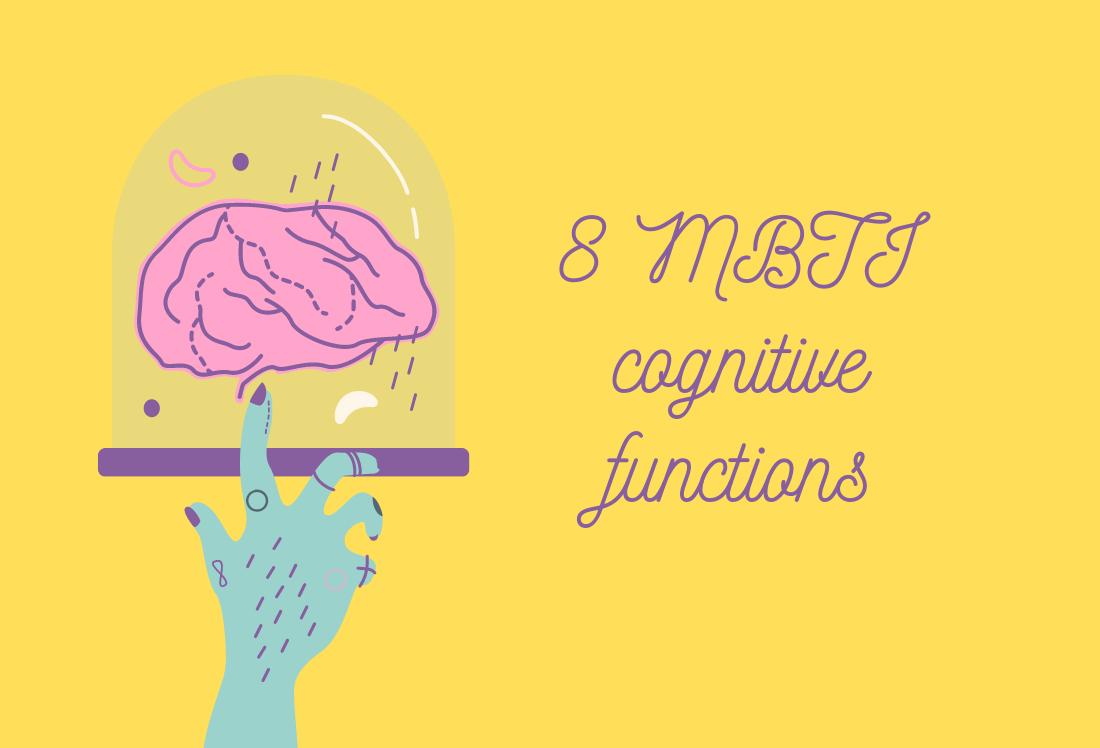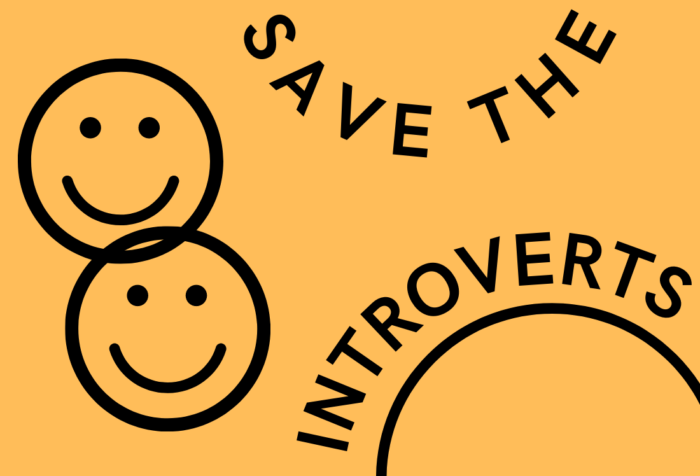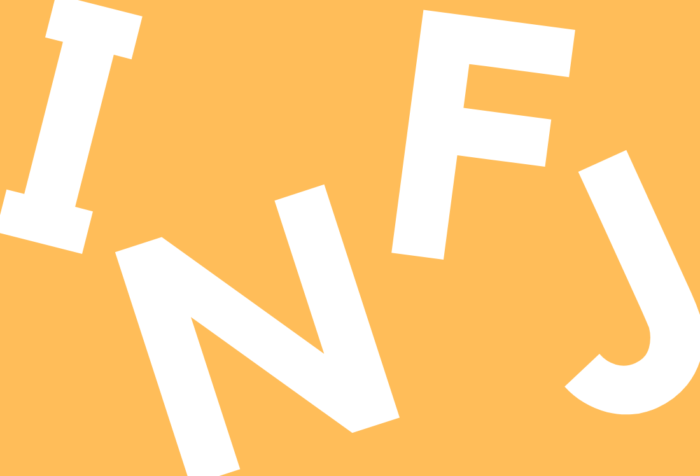This is a guest post written by Cat Sawyer – I consider her one of the foremost experts in cognitive functions, as labeled by me.
In this Introduction to Cognitive Functions, my aim is to give you a basic understanding of the eight Functions, how they are ordered inside a personality type and how they manifest in the behavioural traits.
I won’t overload you with a breakdown of all the sixteen types. However, I will use a few, particularly the INFJ personality type, to illustrate how this system works. As an introduction to Cognitive Functions, I am assuming that most of the audience here has a basic understanding of the MBTI. In that most of you have identified as INFJ personality type and are familiar with the dichotomies of introversion vs extroversion, etc and the list of typical personality traits of the INFJ as well as some understanding of other types.
What Are The Eight Different Functions?
There are eight different Cognitive Functions according to the MBTI,
Introverted Intuition shortened to Ni
Extroverted Intuition, Ne
Introverted Sensing, Si
Extroverted Sensing, Se
Introverted Feeling, Fi
Extroverted Feeling, Fe
Introverted Thinking, Ti
Extroverted Thinking, Te
You have four in your Ego or Conscious and the other four in your Shadow or Unconscious (you have two other parts of the mind called the Subconscious and the Superego but I wont be going into those much in this introduction.)
The order of the Functions is what determines your type, this is called your Function stack. As you can see each Function comes in an Introverted and an Extroverted version, this is called a Functions Attitude. The Intuitive and Sensing Functions are Perceiving Functions and the Thinking and Feeling Functions are Judging Functions, where these appear in your Function stack determines whether you are an Intro/ Extrovert and whether you are a Perceiver or a Judger.
A Brief Description Of The 8 Different Functions
I’ll give a brief description of each before we get back to how they are ordered inside a personality type.
Ni, perceives and processes experiences via inner exploration of ideas and possibilities through imagination, it is expert at abstracting and pattern recognition and is able to see many perspectives simultaneously. It is future orientated.
Ne perceives and processes experiences via outer exploration in the real world, exploring and experimenting with ideas in real time, it is expert at instinctive adaptation in the moment. It is future orientated.
Si, perceives and processes experiences via internal sensation accessed through memory, it is expert at pattern recognition through it’s own past experiences and organises its view of the world based on these. It is past orientated.
Se, perceives and processes experiences via sensation in the moment, it revels in stimulation and has expert awareness of its physical surroundings and quick responses to changes in their physical environment. It is now orientated.
Fi, makes good vs bad Judgements of experiences and encounters based on personal feelings. It is authentic and genuine in its expression.
Fe, makes good vs bad Judgements of experiences and encounters based on group feelings. It is empathic and passionate in its expression.
Ti, makes true vs false judgments of experiences and encounters based on personal logic.
Te, makes true vs false judgments based on group logic and proven data.
ESTP Ego Function Stack Described Briefly
So let’s see how the Functions appear in an ESTP Ego Function stack,
Se
Ti
Fe
Ni
We know that they are an Extroverted Sensing Perceiver so the Extroverted Perceiving Sensing Function Se is first as represented by the ESXP. As a Thinker the Thinking Function is second and when the first function is Extroverted the second is Introverted so we have Ti. When the secondary Function is Introverted the third is Extroverted and it is the same type of Function in terms of Perceiving vs Judging so secondary Ti means Fe is third in the stack. The last Function is Introverted if the third is Extroverted and it will be Perceiving Function when the first is also Perceiving, so Ni is the last Function in an ESTP stack.
ESTJ Function Stack Described Briefly
In an Extroverted Judger the Judging Functions are first and last, and the Perceiving Functions are second and third,
ESTJ
Te
Si
Ne
Fi
The Extroverted Judging Thinking Function Te leads, followed by the Introverted Perceiving Sensing Function, and so on.
INFJ Function Stack Described Briefly
Let’s see how this works in an Introverted type, the INFJ,
Ni
Fe
Ti
Se
So as an Introverted Judger, the rule for Extroverted Judgers is reversed in that the Introverted Perceiving Function is first, in the INFJ this is Ni, followed by Fe and the other Judging Function of Ti with Se last because Ni is first.
INFP Function Stack Described Briefly
And in an Introverted Perceiver, INFP,
Fi
Ne
Si
Te
Where we lead with the Introverted Judging Function, Perceiving in the middle with the remaining Function as the Extroverted Judging Function.
The Opposite Types Of Cognitive Functions Also Exist In Us
So you will note that four letters derive from the top two Function, but that we also have the opposite types of Functions in our stack. Whether you are a Sensor or an Intuitive, a Thinker or a Feeler, an Introvert or Extrovert, a Judger or Perceiver, we all have the opposite parts in our make-up.
Where the Functions appear in our type is determined by how much/how good you are at using them. Or more precisely it’s the other way around. According to the system, this is the hard wiring you were born with. This basically means that the higher up the stack a Function is, the “better” it is. This is reflected in the names given to each of the positions in the stack,
Hero
Parent
Child
Inferior/ Aspirational
Archetypes
These names refer to Archetypes, icons and symbols that we use to make sense of our world.
So the first Function is called the Hero, because it’s good, with the potential of expert at what it does. The second is called the Parent, because it acts as a Mentor, it’s a voice of guidance and wisdom. The Child is the third Function spot, and is always, no matter how old we get, somewhat immature, innocent and a little simplistic. And last is the Inferior/Aspirational called so because it is least effective. Your natural, conscious weaknesses and fears and insecurities lie here. It’s the reason you admire (aspire to be like) people who have talents you seem to lack.
You can, (and should, and naturally will to some degree) develop and improve any and all of your Functions but you will always have the same Functions in the same position throughout your life.
However, personality is extremely malleable and is shaped by your experiences. Your Functions process your unique experiences creating a unique version of whatever your type is, ie You. Functions are by design adaptable so that you can Perceive what you need to and Judge it appropriately in an ever changing world.
The Shadow Functions Have Titles, Too
The Shadow Functions reads as per below:
Nemesis
Critic
Trickster
Demon
Again, they are Archetypes. Your Nemesis is your mortal enemy, fear and self doubt. Your Critic is called so because it’s that voice of harsh judgment upon ourselves. The Trickster is like your natural blind spot, and your Demon is all your worst fears, deeds and experiences live. The Shadow/ Unconscious is called so because it is the hidden part of ourselves – the motivations we are not aware of, which are affecting our thoughts, feelings and behaviours.
Although this part of our minds is our Unconscious, it can be discovered. The Ego, if willing, can explore the Shadow and uncover, face and defeat the Demons it contains. This can be extremely difficult, but it is a natural and necessary process to personal development.
This process is called Shadow Work in Jungian/ MBTI terms. It is what is outlined and promoted in any good self help book. Most religions preach a version of this and the story is told repeatedly in our mythology and entertainment.
Boom: A book I would recommend on this would be, The Dark Side Of The Lightchasers, by Deborah Ford.
INFJ Cognitive Functions And Traits
So let’s have look at the INFJ personality,
Ego
Hero Ni
Parent Fe
Child Ti
Inferior/Aspirational Se
Shadow
Nemesis Ne
Critic Fi
Trickster Te
Demon Si
Ni Hero, the real strength of the INFJ is our Introverted Intuition – our ability to abstract and simulate in our imagination, this is where our perfectionism and idealism comes from. We can conjure such perfect and powerful visions of how things could be. Fe Parent is that voice that compels us make others happy, it’s that uncomfortable feeling when the social harmony is off, it’s our empathy. As a secondary Function, it operates well, but it’s not as powerful as our Ni.
INFJ Cognitive Functions Discussed Further
I’m discussing Functions separately in order to help define what they do but it’s worth noting that they don’t work in isolation from one another.
The effect of combined Ni and Fe is that we are inclined to use our Ni in particular ways, that is, we often focus on ideas that will make peoples lives “better”.
We use Ni to problem solve on other people’s behalf. Also, we use our Ti child. Although the Parent Function is a better tool than the Child, the Hero likes to rely on the Child and they kind of buddy up. I often like to think of the Child Function as the Hero’s Sidekick. It’s that kind of a relationship between the two. So, our Ni likes our Ti logic and the two together can be very effective unless using bad data, which is a weakness of the INFJ.
We have Extroverted Sensing as our Inferior/Aspirational. This is the price of Ni Hero. Being so good in the mental space means we have low awareness of the real, physical world, but it’s what you have to work with. Just because it’s your least effective function doesn’t mean you can’t use it and improve it with some effort. When an INFJ is able to do so in conjunction with their powerful Ni, it is possible for us to master the physical.
INFJ Shadow Functions
You see that the Shadow Functions follow the same order as the Ego but in the opposite Attitude. Ne Nemesis is the voice that tell us all our plans and everyone else’s are doomed, that we’re all going to die anyway, it’s our pessimism and our nihilism. Fi Critic tells us that everyone including ourselves is untrustworthy in their motivations, it tells us all feelings don’t matter and are not valid.
Te Trickster means we have no idea that anyone knows anything. It makes us doubt and suspect all information including everything we think we know. Si Demon is our mortal fear of physical pain, torture, torment, suffering and an agonizing death. It’s where all you memories of physical pain live. At the bottom our Shadow it’s the Function we are least aware of and is why we are so disconnected to our physical body and the sensations it uses to communicate its needs with the mind.
Each Ego Function is linked to its Shadow.
All the idealism and optimism of Ni has a Shadow of doom. the cost of having Fe Parent telling what you should do is having Fi Critic telling you what you shouldn’t feel. It’s where our guilt lives for all the times we think let someone down.
The flip side to Ti Child is Te Trickster relying on ones own data leaves a mistrust of others. And some ability in the Se world means we have none when it comes to sensing our own bodies.
If you are familiar with the descriptions and trait lists of the INFJ, you’ll see that this reads very similarly with the Function as the origin of manifested behaviours. Functions are the programming and operating systems that produce our proclivities and tendencies that are the basis of our personalities.
Looking At ESTJ’s Functions And Traits
Let’s have look at a different type for comparison and see what traits they might have based on their Functions.
ESTJ,
Ego
Te
Si
Ne
Fi
Shadow
Ti
Se
Ni
Fe
So they lead with Te, Se – they are experts with external data. They will use this as their primary way of making sense of the world, from using review to decide on where to eat as well as in their professional lives where they will most likely do things by the book following rules and process accurately. Si Parent uses memory to organize its Te Judgements, the two in tandem are expertly methodical.
Ne Child, Te’s Sidekick will bring out a more fun side to the ESTJ, they will enjoy applying method to Ne experiences such as planning trips and leisure activities. Fi Inferior/Aspirational means they are not great at being in touch with their feelings. Expressions may come out seemly random at times as they bubble up through the awareness of the Ego, often surprising both the ESTJ and those around them. They will have natural admiration for people who seem to have mastered their emotions.
Ti Nemesis tells them that everyone’s thinking is bad and therefore doomed, including their own. Se Critic tells them that they can’t operate in the moment, are physically not capable and neither can anyone else. You can’t trust anyone’s actions. Ni Trickster means that Intuition isn’t even real, the imaginary is completely useless to them. Fe Demon is their worst fear that they and everyone else are terrible people that no one can be relied on to save each other in crisis.
Conclusion
Obviously in this Introduction we are only scraping the surface but I hope that I have given you the tools to start understanding what Cognitive Functions are and how they work, I encourage anyone interested to research deeper, there is a plethora of information on line, some of my recommended sources are The Personality Hacker Podcast https://personalityhacker.com/category/podcast/. Listen to their early episodes for a great introduction on their take on the MBTI, and CSJoseph on YouTube. His channel has some great in-depth breakdowns of the different types. Again early episodes, if you’re still new to this on https://www.youtube.com/c/CSJoseph.
If you have any questions at all, you are welcome to email me at cat.tank89 at gmail dot com. Have fun learning more about Functions!!



